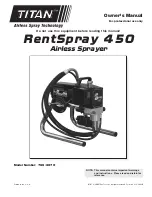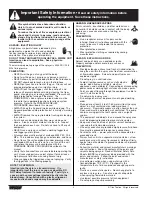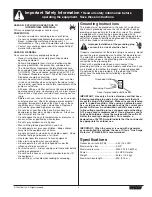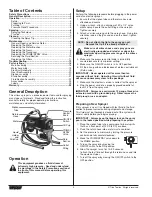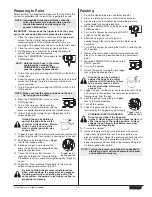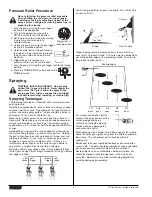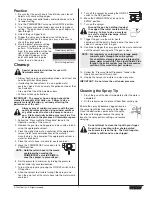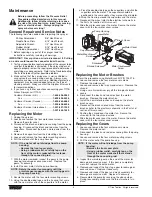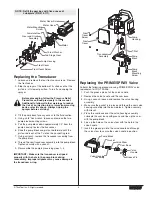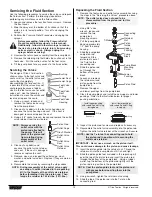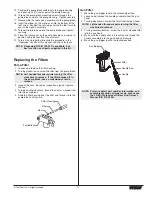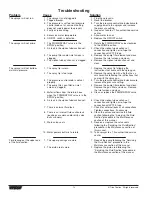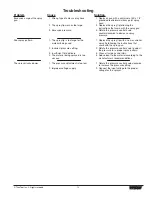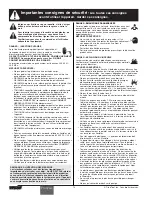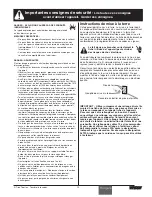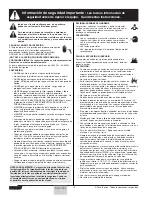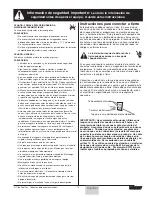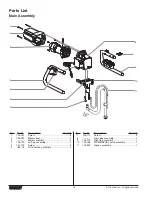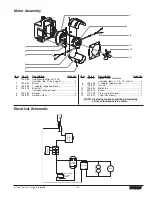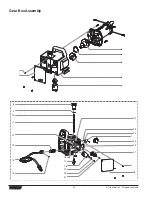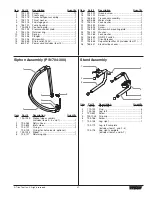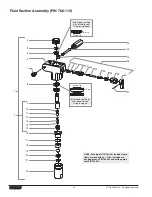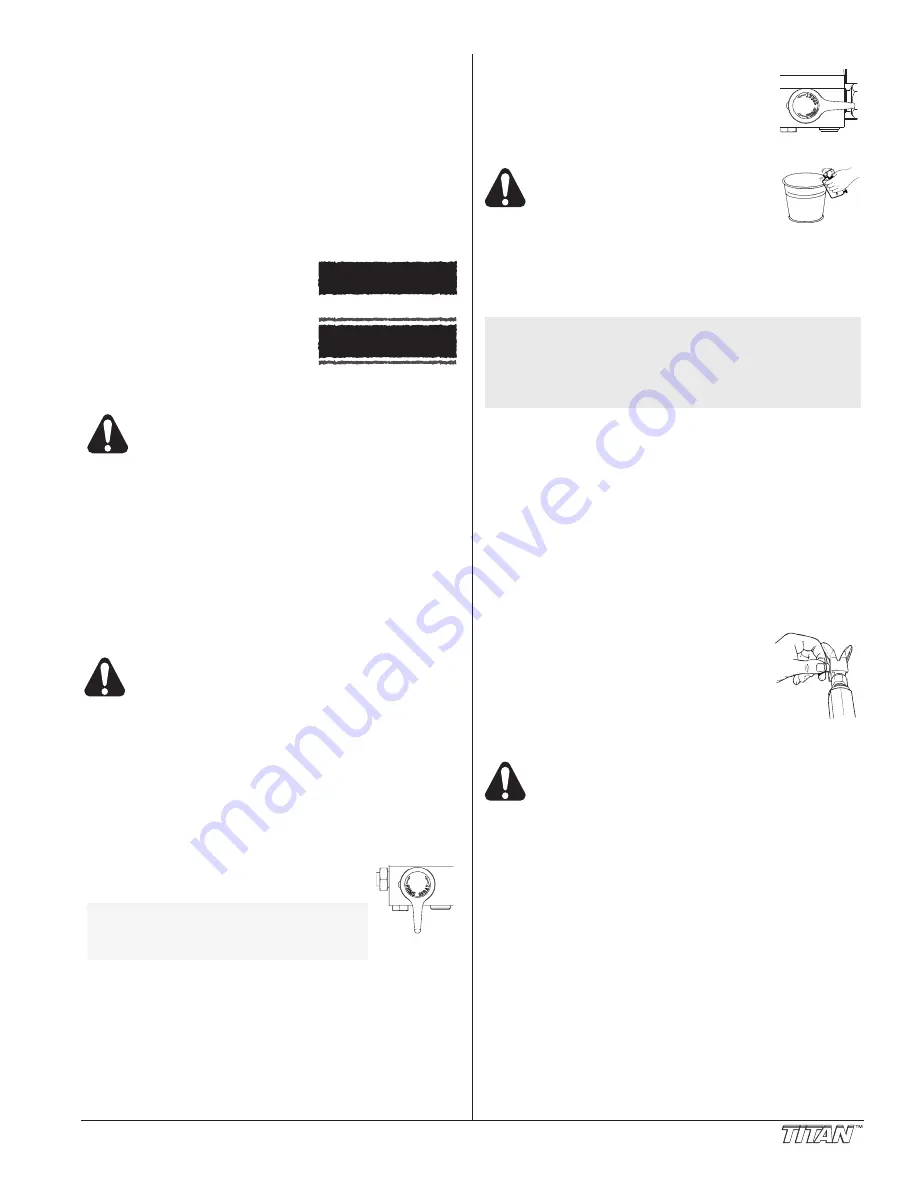
Practice
1. Be sure that the paint hose is free of kinks and clear of
objects with sharp cutting edges.
2. Turn the pressure control knob counterclockwise to its to
its lowest setting.
3. Turn the PRIME/SPRAY valve up to its SPRAY position.
4. Turn the pressure control knob clockwise to its highest
setting. The paint hose should stiffen as paint begins to
flow through it.
5. Unlock the gun trigger lock.
6. Trigger the spray gun to bleed air out of the hose.
7. When paint reaches the spray tip, spray a test area to
check the spray pattern.
8. Use the lowest pressure setting
necessary to get a good spray
pattern. If the pressure is set too
high, the spray pattern will be too
light. If the pressure is set too
low, tailing will appear or the
paint will spatter out in gobs
rather than in a fine spray.
Cleanup
Special cleanup instructions for use with
flammable solvents:
• Always flush spray gun preferably outside and at least one
hose length from spray pump.
• If collecting flushed solvents in a one gallon metal
container, place it into an empty five gallon container, then
flush solvents.
• Area must be free of flammable vapors.
• Follow all cleanup instructions.
IMPORTANT: The sprayer, hose, and gun should be
cleaned thoroughly after daily use. Failure to do so
permits material to build up, seriously affecting the
performance of the unit.
Always spray at minimum pressure with the gun
nozzle tip removed when using mineral spirits or
any other solvent to clean the sprayer, hose, or
gun. Static electricity buildup may result in a fire
or explosion in the presence of flammable vapors.
1. Follow the “Pressure Relief Procedure” found in the
Operation section of this manual.
2. Remove the gun tip and tip guard and clean with a brush
using the appropriate solvent.
3. Place the siphon tube into a container of the appropriate
solvent (refer to recommendations of the material
manufacturer). An example of the appropriate solvent is
water for latex paint.
4. Place the return hose into a metal waste container.
5. Move the PRIME/SPRAY valve down to its
PRIME position.
6. Set the pressure to minimum by turning the pressure
control knob fully counterclockwise.
7. Turn on the sprayer by moving the ON/OFF switch to the
ON position.
8. Allow the solvent to circulate through the sprayer and
flush the paint out of the return hose into the metal waste
container.
NOTE: Hold the return hose in the waste
container when moving the
PRIME/SPRAY valve to PRIME in
case the sprayer is pressurized.
Good spray pattern
Paint tailing pattern
9. Turn off the sprayer by moving the ON/OFF
switch to the OFF position.
10. Move the PRIME/SPRAY valve up to its
SPRAY position.
11. Turn on the sprayer.
Ground the gun by holding it against
the edge of the metal container while
flushing. Failure to do so may lead
to a static electric discharge, which
may cause a fire.
12. Trigger the gun into the metal waste
container until the paint is flushed out of the hose and
solvent is coming out of the gun.
13. Continue to trigger the spray gun into the waste container
until the solvent coming out of the gun is clean.
14. Follow the “Pressure Relief Procedure” found in the
Operation section of this manual.
15. Unplug the sprayer and store in a clean, dry area.
IMPORTANT: Do not store the unit under pressure.
Cleaning the Spray Tip
1. Flush the gun with solvent immediately after the work is
completed.
2. Oil the retractor pins to prevent them from seizing up.
Should the spray tip become clogged, reverse
the spray tip with the lever and pull the trigger.
Once the obstruction comes out of the spray
tip, release the trigger, reverse the spray tip
back to the spray pattern setting, and resume
spraying.
Do not attempt to clean the tip with your finger.
Do not use a needle or other sharp pointed
instrument to clean the tip. The hard tungsten
carbide is brittle and can be chipped.
NOTE: For long-term or cold weather storage, pump
mineral spirits through the entire system.
For short-term storage when using latex paint,
pump water mixed with Titan Liquid Shield Plus
through the entire system (see the Accessories
section of this manual for part number).
© Titan Tool Inc. All rights reserved.
7

